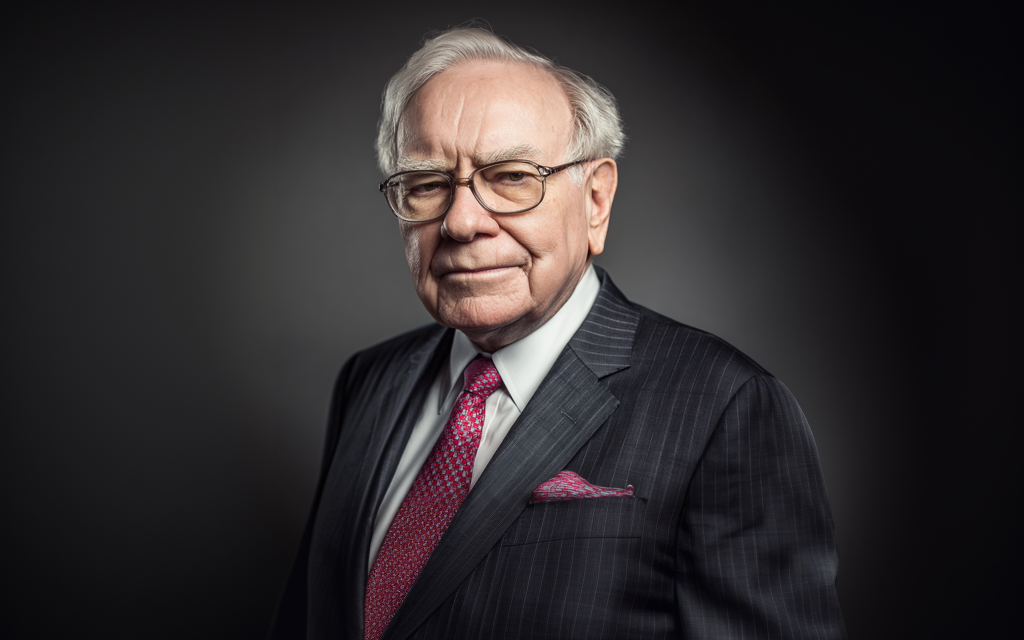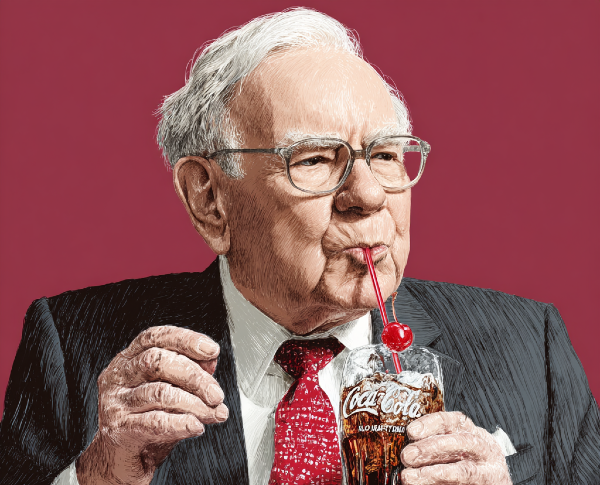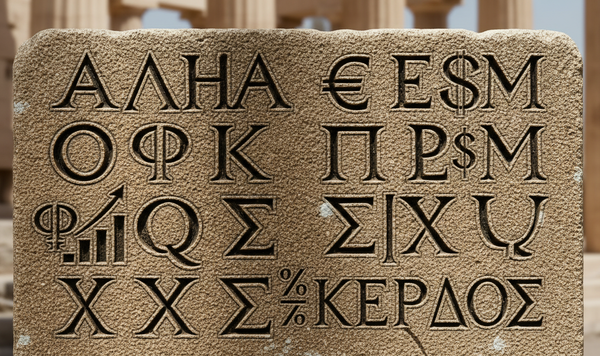Warren Buffett quotes: 15 best investment strategies from the Oracle of Omaha
Meta Description: Learn Warren Buffett's 15 best investing strategies through his funniest quotes. Discover how to invest like Buffett with proven tactics that turned $1,000 into $55 million.

Warren Buffett's investment philosophy has generated a 19.8% annual return since 1965, building a trillion-dollar company. But rather than looking at his performance, we'll look at some of his famous quotes - and which lessons we can learn, the structural genius behind his crisis-era deals, and the multi-billion-dollar mistakes that shaped his strategy.
Warren Buffett Investment Stats at a Glance (Mid-2025):
- Net Worth: $140.4 billion
- Annual Returns (CAGR): 19.8% (1965-2023)
- Berkshire Hathaway Value: Over $1 trillion market cap
- Longest Holding: Coca-Cola (36+ years)
- Largest Holding: Apple Inc. (25.76% of portfolio)
- Success Rate: Made most money on just 10 of ~500 stocks owned
How Warren Buffett became the world's greatest investor
In case you are just getting started with personal finance, you might have no idea about who is Warren Buffett. Put in simple terms, he is considered the best investors of all the time. He he so good that has earned the nickname "Oracle of Ohama". Omaha because of where he was born in 1930.
Warren Buffett, CEO of Berkshire Hathaway, has been dispensing investment wisdom for over six decades. His track record? A staggering 19.8% compounded annual return (vs the average 7% of the S&P500) that transformed Berkshire Hathaway from a failing textile company into an empire worth over $1 trillion - the first non-technology company to achieve this milestone.
Buried beneath his folksy charm are some of the most profitable investing insights ever recorded. The power of his approach is staggering. Take this one number: an initial $1,000 investment in Berkshire in 1965 would be worth nearly $36 million today.
The Oracle's mindset: the setup for success
Buffett's entire philosophy is built on simplicity, patience, and healthy skepticism.
- On simplicity: he famously said, "I don't look to jump over 7-foot bars: I look around for 1-foot bars that I can step over."
- On patience: he is the master of the long game. "Someone is sitting in the shade today because someone planted a tree a long time ago."
- On skepticism: Buffett is wary of conflicted advice. "Wall Street is the only place that people ride to in a Rolls Royce to get advice from those who take the subway."
This mindset is the launching pad for the specific, wealth-building strategies that follow.
The Buffett blueprint: 7 actionable investment lessons
Here are the timeless Warren Buffett investing principles and a deeper look at his methodology.
Lesson 1: buy wonderful companies at a fair price
The Quote: "It's far better to buy a wonderful company at a fair price than a fair company at a wonderful price." - 1989 Berkshire Hathaway Annual Letter
This represents Buffett's evolution from his mentor Ben Graham's "cigar butt" investing to quality-focused value investing, a pivotal shift driven by his long-time partner, Charlie Munger. Munger championed the idea that paying a fair price for an exceptional business was far more profitable than getting a statistical bargain on a mediocre one.
The core idea is to separate a company's daily stock price from its long-term intrinsic value. The gap between them is your "margin of safety"- a buffer against bad luck or your own errors.
Lesson 2: stay inside your circle of competence
The Quote: "Never invest in a business you can't understand."
This risk management strategy is why Buffett famously avoided the dot-com bubble. He uses a baseball analogy: "The stock market is a no-called-strike game." You can wait for the perfect pitch. This isn't about raw intelligence- it's about intellectual honesty. Know your boundaries.
Lesson 3: be greedy only when others are fearful
The Quote: "We simply attempt to be fearful when others are greedy and to be greedy only when others are fearful." - 1986 Berkshire Hathaway Annual Letter
This contrarian principle is his most famous, but a look at his actions during the 2008 Financial Crisis reveals a level of sophistication far beyond simply "buying the dip."
The Crisis playbook: more than just buying the Dip
When global markets were melting down, Buffett wasn't just buying common stock; he was engineering brilliant, bespoke deals that provided immense, asymmetric upside.
- Goldman Sachs (2008): Berkshire invested $5 billion not in common stock, but in preferred stock that paid a guaranteed 10% dividend ($500 million/year). He also received warrants (a free option) to buy common stock at a low price. This structure gave him a massive, bond-like income stream (downside protection) plus all the potential for a stock recovery (uncapped upside). The total profit was over $3.1 billion.
- Bank of America (2011): He used the same playbook, investing $5 billion in preferred stock with a 6% dividend and receiving warrants to buy 700 million common shares at just $7.14 each. He later exercised those warrants, and the total gain on that single investment has since grown to over $28 billion.
These weren't simple market bets; they were masterpieces of financial engineering that paid him handsomely to wait for the upside while dramatically limiting his risk.
Lesson 4: let compounding work its magic
The Quote: "Our favorite holding period is forever."
This isn't just a philosophy- it's mathematics. The power of compounding is the engine of wealth. As Buffett proved in his famous $1 million hedge fund bet, a simple S&P 500 index fund (7.1% annual return) crushed a portfolio of sophisticated hedge funds (2.2% annual return) over ten years, mainly because high fees consumed all their returns.
Case Study: the two engines of the Coca-Cola investment
No investment better exemplifies this. In 1988, Berkshire began accumulating its stake in Coca-Cola for a total cost of $1.3 billion. Today, that stake is worth around $27.6 billion. But the more profound lesson is the yield-on-cost.
- Berkshire receives $816 million in annual dividends from Coca-Cola.
- Measured against the original $1.3 billion cost, this represents a mind-boggling 63% annual cash yield.

This demonstrates the dual engines of a "forever" investment: massive capital appreciation and a growing dividend stream that can eventually return more than your initial investment every single year.
Lesson 5: portfolio concentration wins
Buffett's portfolio is a direct contradiction of conventional diversification wisdom.
Apple (AAPL) remains his largest holding, but its weight has moderated to 22% of the public equity portfolio.
The top five holdings (Apple, American Express, Coca-Cola, Bank of America, Chevron) constitute approximately 70% of the entire portfolio.
This reflects his belief that it's better to own a significant stake in a few wonderful businesses you understand deeply than a tiny stake in hundreds you don't.
Lesson 6: learn from failure - even multi-billion-dollar blunders
The Quote: "Rule No. 1: Never lose money. Rule No. 2: Never forget Rule No. 1."
This means avoiding permanent impairment of capital. Buffett's biggest mistakes provide the best lessons.
The "$200 Billion Emotional Decision" (Berkshire Hathaway): Buffett's own estimate of the opportunity cost he incurred by buying a failing textile mill out of spite instead of investing that capital directly into high-quality insurance companies from the start.
The story isn't about Buffett losing $200 billion. It's about how a single, emotionally-driven decision cost him a potential future gain of that magnitude, even though the company he bought became the vehicle for his legendary success.

In the early 1960s, Berkshire Hathaway was a failing textile manufacturer. Buffett started buying its stock because it was dirt cheap. The company's CEO, Seabury Stanton, made an oral agreement to buy Buffett's stake for $11.50 per share. However, when the official written offer came, Stanton had lowered it to $11.375 per share - a difference of just 12.5 cents. Infuriated by this petty act, Buffett didn't sell. Instead, out of what he later admitted was pure spite, he bought a controlling interest in the company and promptly fired Stanton. This was the emotional decision. He now owned a failing textile company because his ego had been bruised. Buffett quickly realized his mistake. He was now in charge of a business in a terrible industry with intense competition and high capital needs. He famously compared it to being in a "leaking boat," saying, "Should you find yourself in a chronically leaking boat, energy devoted to changing vessels is likely to be more productive than energy devoted to patching leaks."
The genius move came when Buffett stopped reinvesting in the textile business (patching the leak) and started using its small cash flow to buy wonderful businesses instead. In 1967, he bought National Indemnity Company, an insurance firm. This became the new engine of Berkshire Hathaway's growth, while the original textile business was eventually shut down in 1985.
This is the crucial part. The "$200 billion mistake" is a thought experiment. Buffett's calculation goes like this: Imagine if all the money and effort he poured into the dying textile business had instead been invested directly into the high-quality insurance business from day one. Because of compounding, the returns from a great business versus a terrible one diverge massively over decades. The difference between Berkshire's actual historical return and the hypothetical return is the opportunity cost—an amount Buffett estimates to be in the hundreds of billions.

The Dexter Shoe "Compounding Error": In 1993, he bought Dexter Shoe for $433 million, paying with Berkshire stock. The business soon went to zero. The true mistake wasn't the $433 million loss; it was the currency he used. The Berkshire shares he gave away would be worth an astonishing $17.87 billion today. Lesson: Never pay for a deteriorating asset with a spectacularly appreciating one.
Lesson 7: the best investment is in yourself
This is a recurring theme from Buffett. The greatest asset you have is your own mind- it can't be taxed or inflated away. He famously champions reading 500 pages a day to build your knowledge base. Your own knowledge is the ultimate margin of safety.
Winning the inner game: the psychology of a Buffett investor
Beyond financial analysis, Buffett's greatest advantage may be his psychological fortitude. He has mastered the "inner game" by sidestepping the cognitive biases that sink most investors.
- He defeats herd mentality: when everyone is panicking, Buffett's rational brain calmly sees a sale.
- He avoids overconfidence: the "circle of competence" is a powerful tool against overconfidence bias. He readily admits what he doesn't know.
- He demands a margin of safety: this isn't just a financial concept; it's a psychological one- a built-in buffer against the fact that we are often wrong.
The wisdom in context: the story behind the quotes
Buffett's famous one-liners are more than just platitudes; they were direct justifications for major strategic decisions.
- "Be fearful when others are greedy..." (1986): He wrote this to explain why Berkshire was stockpiling cash and not buying stocks during the mid-80s market euphoria, a move that positioned him perfectly for the 1987 crash.
- "You only find out who is swimming naked when the tide goes out" (1992): This was used to describe how Hurricane Andrew revealed that many insurance companies, which had looked profitable in calm weather, were actually taking on far too much risk.
- "Made most of his money on just 10 of 500 stocks..." (2013): This stunning admission validates the Pareto Principle (80/20 rule) in investing. Portfolio returns are not driven by your average investment but are overwhelmingly dominated by a few spectacular winners. This is the mathematical justification for portfolio concentration.
Your action plan: how to start investing like Buffett today
- Pay yourself first. Automate savings of 10-20% of your income.
- Use the Buffett-style investment checklist. Before you buy anything, ask these questions:
- Understandability: can I explain in simple terms how this business makes money?
- Moat: what protects it from competition? Is that protection getting stronger?
- Management: is the leadership team rational, honest, and shareholder-friendly?
- Value: is the stock selling for a significant discount to my conservative estimate of its intrinsic value?
- Stay within your circle. For everything outside your area of expertise, use a low-cost S&P 500 index fund.
- Embrace strategic laziness. Set up automatic monthly investments. The best action is often no action.
- Maintain a long-term perspective. Ignore the daily noise. Remember that every market crash in history has eventually recovered.
Planting your own tree for the future
A true understanding of how to "invest like Buffett" requires moving beyond the folksy wisdom and appreciating the deep, multi-disciplinary sophistication that underpins his success. This more accurate portrait is built on mathematical rigor, structural genius, emotional discipline, and intellectual honesty.
As Buffett says: "Someone is sitting in the shade today because someone planted a tree a long time ago." The seeds of financial independence you plant today through patient, disciplined investing will provide shade for generations to come.me.





